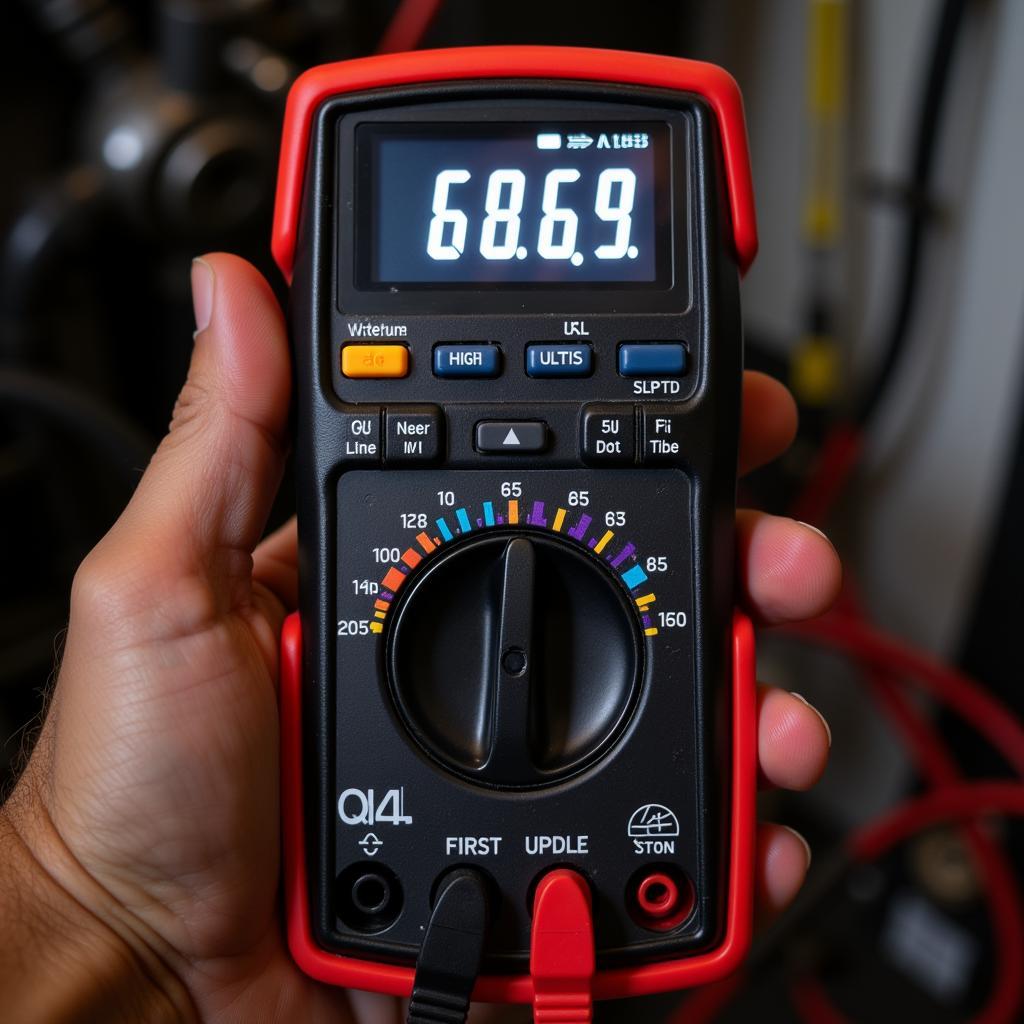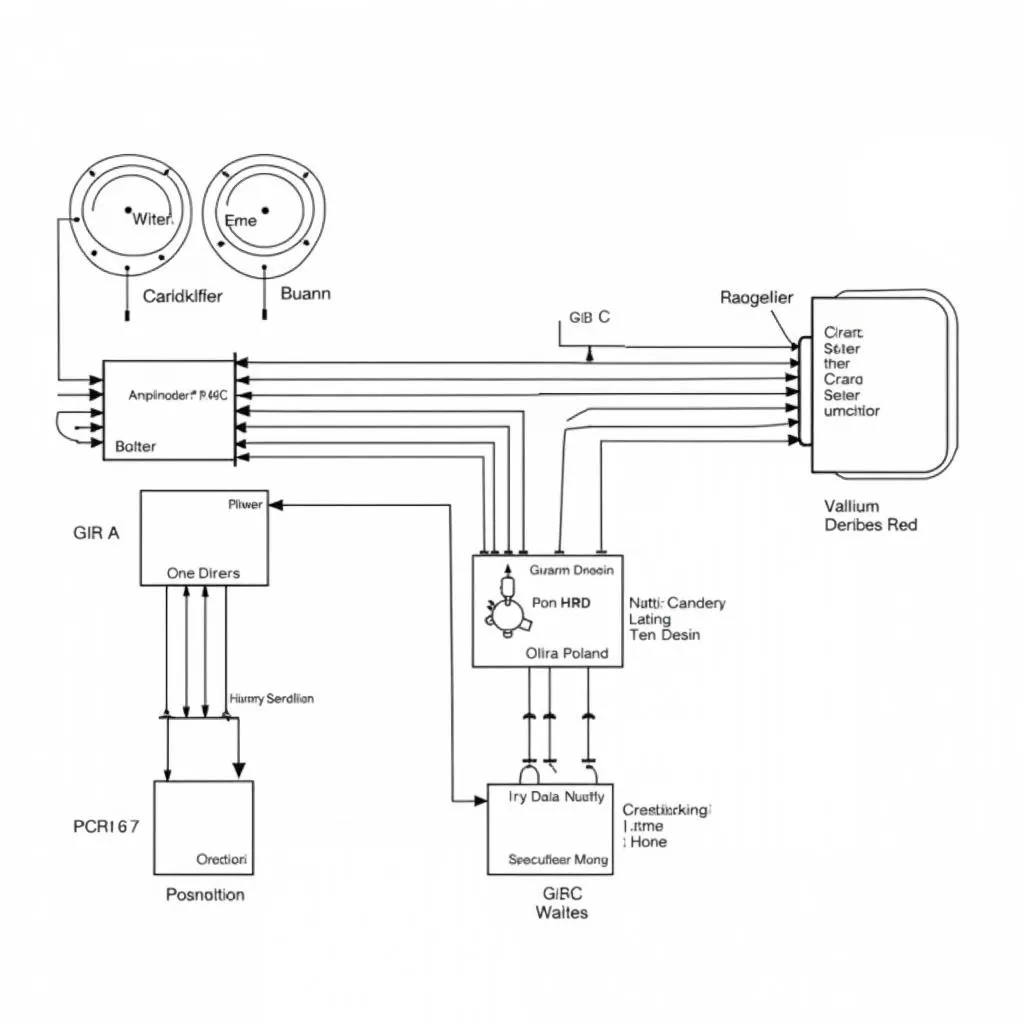A dead car battery is frustrating, especially when it seems to happen out of the blue. Often, the culprit is a parasitic drain, silently sucking the life out of your battery even when the car is off. Performing a car battery parasitic drain test is crucial for identifying and fixing this issue. This article will guide you through the process, providing the knowledge and steps to confidently diagnose and resolve your car battery woes.
Understanding how to perform a car battery parasitic drain test can save you time and money. It allows you to pinpoint the source of the drain, whether it’s a faulty radio, a glove box light, or a more complex electrical issue. Before we dive into the test itself, let’s discuss the basics of parasitic drain. A small amount of current draw is normal, even when the car is off, to power things like the clock and alarm system. However, excessive draw indicates a problem.
What is a Car Battery Parasitic Drain?
A parasitic drain, also known as a key-off drain, occurs when an electrical component in your vehicle continues to draw power even after the ignition is turned off and the key is removed. This continuous draw can slowly deplete your battery, leaving you stranded with a dead battery in the morning.
How to Perform a Car Battery Parasitic Drain Test
Here’s a step-by-step guide on how to perform a car battery parasitic drain test:
- Gather Your Tools: You’ll need a digital multimeter with a 10A DC current setting.
- Prepare Your Car: Turn off all lights, close all doors, and ensure the ignition is off. Let the car sit for about 30 minutes to allow any modules to go to sleep. This is important for an accurate reading.
- Disconnect the Negative Battery Cable: Locate the negative terminal of your battery, usually marked with a “-” sign. Carefully loosen the nut securing the negative cable and disconnect it.
- Connect the Multimeter: Set your multimeter to the 10A DC current setting. Connect the red lead of the multimeter to the negative battery terminal. Connect the black lead to the negative battery cable.
- Observe the Reading: Your multimeter will display the current draw. A reading of 50 milliamps (0.05 amps) or less is generally considered acceptable. A higher reading indicates a parasitic drain.
- Identify the Culprit: If the reading is high, start by checking common culprits like interior lights, glove box lights, and trunk lights. If these are not the issue, you’ll need to systematically remove fuses one by one, observing the multimeter reading after each removal. A significant drop in the reading indicates the circuit with the faulty component.
- Further Diagnosis: Once you’ve identified the circuit, you’ll need to pinpoint the specific component causing the drain within that circuit. This may require further testing with a wiring diagram.
 Multimeter Reading During a Parasitic Drain Test
Multimeter Reading During a Parasitic Drain Test
“A common mistake people make is not letting the car sit long enough before starting the test,” says automotive electrical expert, David Miller. “This can lead to inaccurate readings and missed diagnoses. Patience is key in this process.”
Why is My Car Battery Draining So Fast?
Several factors can contribute to a fast battery drain, including:
- Age of the Battery: Older batteries have a reduced capacity to hold a charge.
- Extreme Temperatures: Both hot and cold weather can affect battery performance.
- Short Trips: Short trips don’t allow enough time for the alternator to fully recharge the battery.
- Faulty Alternator: A failing alternator may not be charging the battery properly. If you’re experiencing a cd mp3 car radio with bluetooth issue, this could also be a sign of a faulty alternator.
- Parasitic Drain: As discussed, this is a significant contributor to battery drain.
“A bluetooth stereo radio for car can sometimes be a source of parasitic drain, especially if installed incorrectly,” adds Miller. “However, it’s important to thoroughly test before jumping to conclusions.” If you’re dealing with an older car and want to upgrade your stereo, understanding old car radio wiring colours is essential. For those looking to integrate a newer GM radio into an older vehicle, here’s a guide on wiring newer gm radio in older car. You might also consider getting a car toys bluetooth radio.
Conclusion
Performing a car battery parasitic drain test is an essential skill for any car owner. By following the steps outlined in this article, you can effectively diagnose and resolve battery drain issues, saving yourself time, money, and the frustration of a dead battery. Remember to be patient and methodical in your approach, and don’t hesitate to seek professional help if needed. Addressing a parasitic drain promptly will extend the life of your battery and keep your car reliably starting every time.


